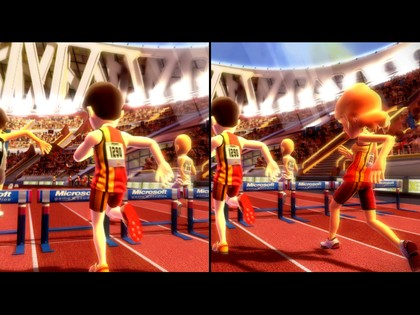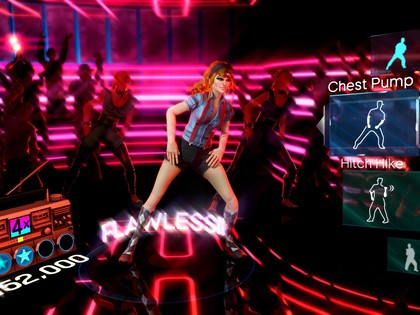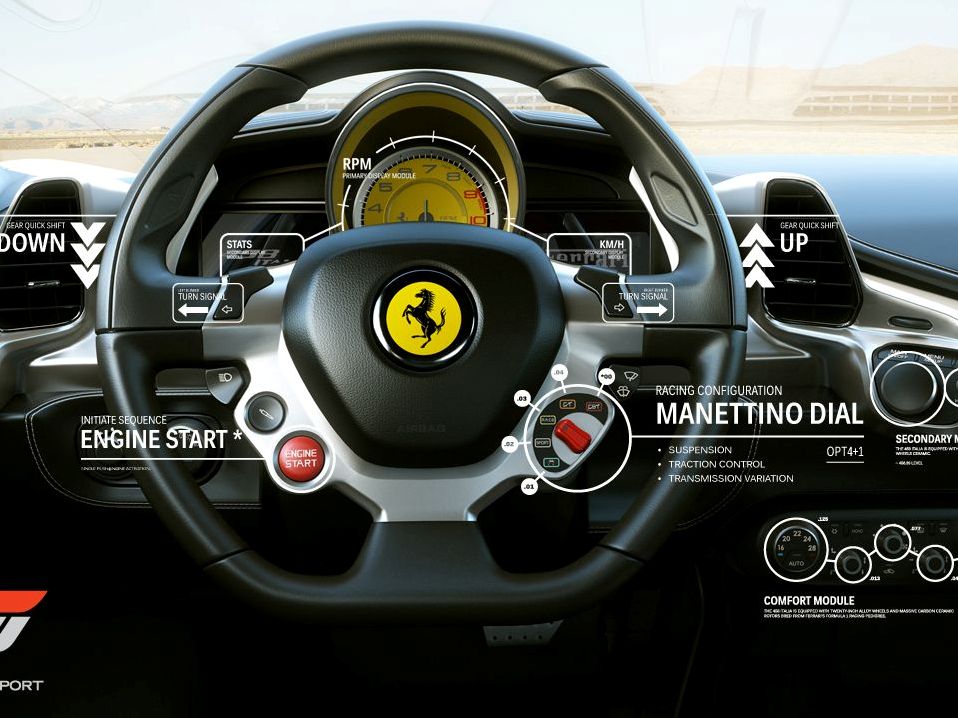PlayStation Move vs Microsoft Kinect
Kinect and Move battle it out in our head-to-head analysis
PlayStation Move vs Kinect: latency
What's really impressive about the Move is the speed at which it keeps up with your movements. PS3 game The Fight has you holding a Move controller in each hand (no need for a Navigation controller) and punching in any way you like as you compete in bare knuckle fist fights.
We literally couldn't throw this thing off. We tried varied combinations of punches as quickly as we could move our fists and our on-screen man copied everything from the most subtle of twitches to the over-emphasised uppercuts. Any latency there may be was undetectable.
Kinect, again, seems to fall short of Move's performance in this area. One demo has you batting a ball into the screen against a wall in the distance that would crumble as the ball strikes it. You can see the entire body of your on-screen avatar and so you can use any limb – head, arms, feet, whatever – to hit that ball.
This full-body interaction is beyond the capabilities of the remote-only Move, but there's a noticeable delay between your movements and that of your virtual counterpart. Enough of a delay that a sudden last-minute flick of the hand would potentially miss your target.
We played a hurdles racing minigame in the title Kinect Sports which has you run on the spot and jump to make your on-screen racer bound over hurdles. The first thing we noticed is that your runner's legs don't go the same pace as yours, his speed increases gradually just like those old Track & Field games where you bash two buttons as rapidly as you can to build up a 'speed' gauge.

You also don't jump when your character reaches the hurdle as you would do intuitively. You jump when the hurdle turns green a few second before you get to it. If Kinect recognises you jumped within that brief window your character will make the jump over the hurdle. Too early or too late and he stumbles.
Get daily insight, inspiration and deals in your inbox
Sign up for breaking news, reviews, opinion, top tech deals, and more.
This is the most shockingly basic form of gesture recognition at work here – there was no 1-to-1 relation between our movements and that of the runner at all. It felt like we were basically performing pre-defined gestures to activate commands that could just as easily have been assigned to buttons. This is not what we expect from next-generation motion control.
PlayStation Move vs Kinect: limitations
Four Move controllers can be connected to the PS3 at once – along with four Navigation controllers. Recently revealed (but unconfirmed) Kinect specs claim that while it can detect up to six different players, it only allows for "two active players", which puts a serious downer on any four-player party game action you may have been looking forward to.
The one glaringly obvious limitation with Move is its ability to track only the movements of one limb – the one holding the controller - or two limbs for games like The Fight which have you hold two Move controllers. Kinect senses your whole body – up to 20 limbs per player for two-player games if those aforementioned tech specs are accurate.
Although, hilariously, we saw one woman who's long skirt prevented her from playing the track racing game on the device because it couldn't see enough of her legs. Evidently you'll have to dress suitably to play Kinect.
You'll need to be happy on your feet too – we're yet to see a Kinect game played sitting down. And how well will it work for people (such as those in Japan) with tiny living rooms? We're yet to see.
Doubts have also been cast over Kinect's ability to accommodate more complex gaming experiences like shooters and the like. Sony has emphasised its focus on catering to the hardcore crowd with Move, which has enough buttons on its body to accommodate complex controls alongside all that flowery motion control stuff.
In it has backed up these claims showing core games working perfectly with Move, titles like first-person-shooters Killzone 3 and Socom 4, or Resident Evil 5 and platformer LittleBigPlanet.
PlayStation Move vs Kinect: potential
So we've said Move is more accurate than Kinect, reacts faster, can cater to both mainstream and hardcore experiences and lets you have a seat while you do it. Yes, it's been a very one-sided argument so far.
But if there's one incredibly significant factor that lies in favor of Kinect, it is its potential to innovate. While Move is clearly brilliant, it's hard to ignore its similarities to Wii. It's an improved Wii Remote, and while this will no doubt allow it to provide a few experiences the Wii Remote couldn't, we expect many of the same experiences just with better 1-to-1 response.
Kinect has the potential to be truly surprising. The fact it's the first mass market device to detect your entire body movement in 3D arguably throws up more far-reaching gameplay possibilities the likes of which we've never seen before.
But we place emphasis on the words 'never seen' because that's just it – both Move and Kinect are due out in a matter of months and while Sony has showed off everything from hardcore shooters to cutesy pet sims, Microsoft is yet to showcase anything other than a selection of simple sports, racing, dancing and fitness games that are all so very Wii-like and blatantly going for that same casual gamer crowd.
It's no secret that Xbox 360's mostly hardcore following is so far disappointed with what's been shown. We imagine adventure games that place you in the fantasy world, fighting games that let you duke it out in realistic bouts, and interactivity unlike anything before.

JUST DANCE: Dance Central on Kinect
The only Kinect software shown that lives up to these fantasies is the Milo and Kate demo, which uses voice recognition (and the microphones built into Kinect) to let players interact with a virtual boy named Milo.
But there's much doubt as to how realistic early demonstrations of the software are. It portrays perfect full-sentence voice recognition, emotion recognition based on a player's facial expression, subtle vocal tones and delays in speech, and artificial intelligence all of which are literally light-years ahead of the most advanced computer software we even knew existed.
It's little wonder that doubts have been placed over its validity as a representation of the actual game, which creator Peter Molyneux has recently been forced to reassure gamers is a real product planned for release next year.
PlayStation Move vs Kinect: final thoughts
Microsoft has been touting the traditional controller as the barrier between the player than the game – a barrier which Kinect rids us of at last.
But from our pretend-steering-wheel, early-hurdle-jumping experiences, we argue that taking away the controller doesn't remove barriers – it removes the tactile connection with a game. The visceral aspect of gaming.
With Kinect, you have no feeling of the world you're pretending to be in. Something as simple as tugging on the trigger on the back of the Xbox 360 controller and feeling that rumble in your hands as your on-screen gun rattles through bullets serves as a tactile connection between you and the virtual world.
In driving games, real immersion comes from the feeling of a (usually pricey) force feedback steering wheel twitching and jerking violently to the drama of your on-screen vehicle. That subtle vibration as you drive over dirt roads, or that sudden release of tension as the car launches into the air followed by the violent shudder of the landing. That feeling pulls you into the game.

RACING AHEAD: Forza 4 will be Kinect enabled
You may not own one of those pricey wheels, but we think that even just the simpler vibrations you get from a standard controller (and more significantly the PS Move) offers at least some form of tactile feedback which, continuing with the racing game example, is another layer of feedback that can sometimes assist you in judging how much grip you have on the road, how hard you actually hit the wall, or how rough the road surface is.
In any gaming application – playing tennis, shooting a gun, swinging a sword or steering a car - given the choice between holding something in our hands or suspending them in mid-air and pretending, we'd go for the tactile controller without a second thought.
Imagine, however, if MS was to make games that combined use of the standard controller with Kinect's full-body recognition. A standard shooter in which you could literally peer around corners, for example. Food for thought.
Overall, Move has the upper hand with what's been shown so far. Its library is more rounded for both the hardcore and the casual, and the games feel more complete. Everything about Kinect feels work-in-progress. Yet, we're not writing it off yet. On the contrary we feel we know what to expect from Move, while we remain curious and excited to see what Kinect could have in store.
-------------------------------------------------------------------------------------------------------
Liked this? Then check out Microsoft Kinect: what the future holds
Sign up for TechRadar's free Weird Week in Tech newsletter
Get the oddest tech stories of the week, plus the most popular news and reviews delivered straight to your inbox. Sign up at http://www.techradar.com/register
- 1
- 2
Current page: Move vs Kinect: limitations and potential
Prev Page PlayStation Move vs Kinect: overview